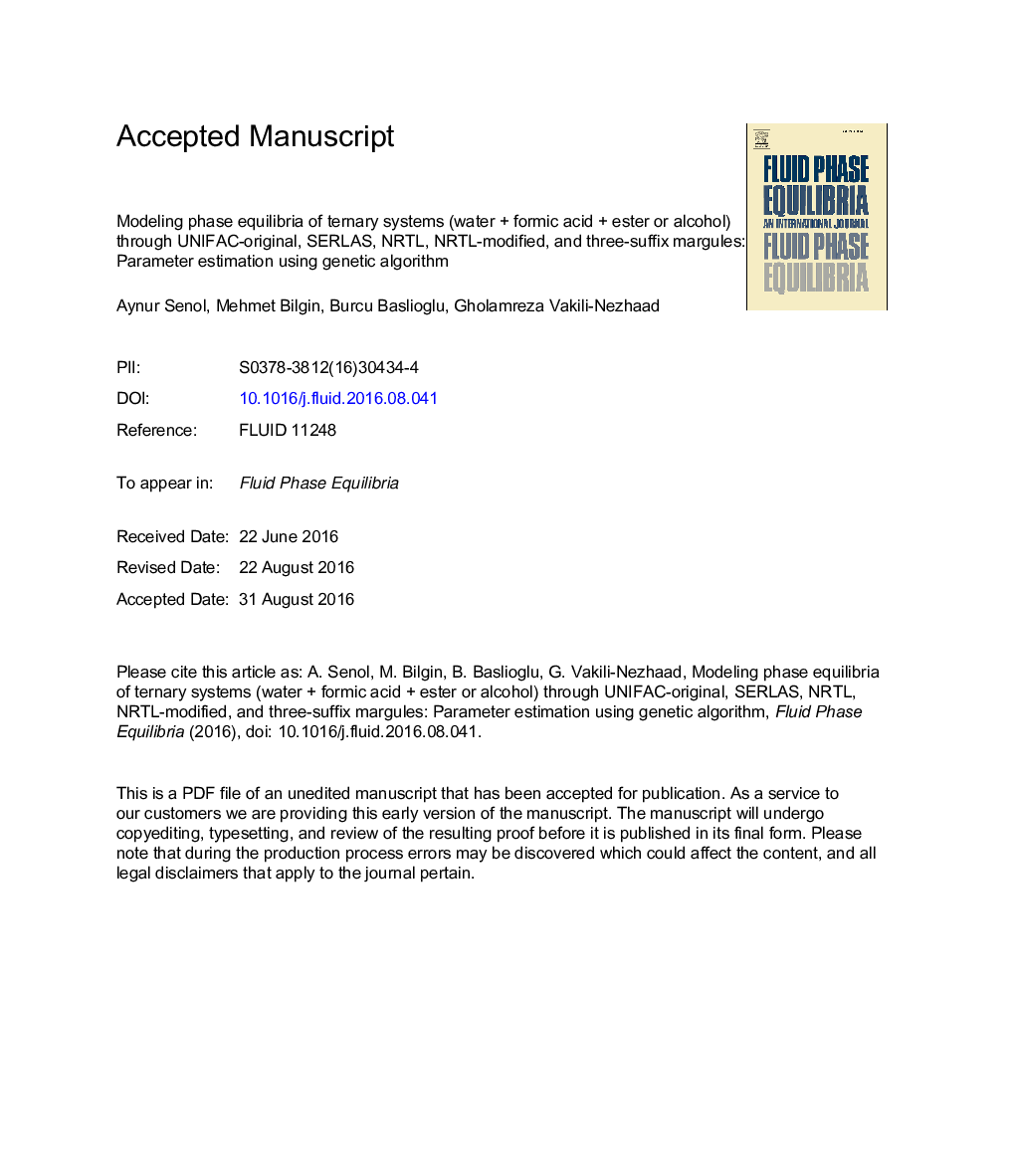| Article ID | Journal | Published Year | Pages | File Type |
|---|---|---|---|---|
| 4768195 | Fluid Phase Equilibria | 2016 | 53 Pages |
Abstract
Ternary liquid-liquid equilibrium (LLE) systems composed of (water + formic acid + ester or alcohol), exhibiting experimental phase diagrams of type 1, have been studied at T = (298.2 ± 0.1) K and P = (101.3 ± 0.7) kPa. The equilibrium distribution of formic acid onto (water + solvent) two-phase system is better for dibasic ester (diethyl sebacate, diethyl succinate) as compared to monobasic ester (ethyl caprylate, ethyl valerate) and isoamyl alcohol. The thermodynamic models SERLAS, UNIFAC-original, NRTL, NRTL-modified and three-suffix Margules have been deeply tested for consistency in simulating the ternary LLE behavior. An immediate goal is to estimate the interaction parameters of molecular models from ternary data only using a genetic algorithm. The genetic algorithm identifies globally optimal values by producing a population of candidate solutions from given upper and lower bounds of the interaction parameters. The reliability of existing models has been analyzed statistically with respect to three physical extraction factors. Essentially, SERLAS, UNIFAC-original, NRTL, NRTL-modified and three-suffix Margules yield mean errors of 3.4%, 19.4%, 4.2%, 4.4% and 8.6%, respectively, enabling the ternary phase behavior to be simulated satisfactorily. The UNIFAC-original prediction is moderately precise. NRTL is especially effective in correlating both the two-phase envelope size and the tie line slope. While SERLAS has proven reasonably successful in reproducing the physical extraction factors, yielding about equally accurately estimates for each ternary system.
Related Topics
Physical Sciences and Engineering
Chemical Engineering
Chemical Engineering (General)
Authors
Aynur Senol, Mehmet Bilgin, Burcu Baslioglu, Gholamreza Vakili-Nezhaad,
